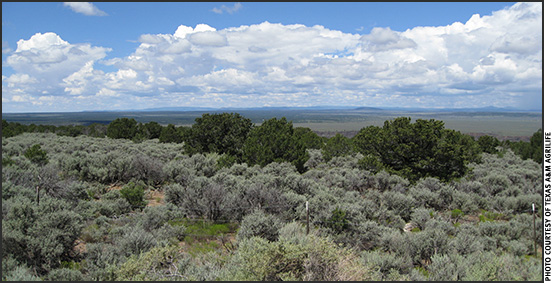
Understanding changing trends can help toward making important planning and development decisions.
Texas Land Trends Report
Shows Changes in Rural
Working Lands, Operators
Texas working lands are increasingly threatened.
Fragmentation of rural working lands, an increasing population, and changes in landowner age, residency, land-use preferences and other factors are addressed in the new Texas Landowner Changes and Trends report.
“The goal of this report is to describe the state’s growing population and the data relating to rural lands,” said Roel Lopez, director of the Natural Resources Institute, part of the Texas A&M University System. “Using several datasets, we have also evaluated a number of demographics among landowners of privately owned rural working lands.”
The report addressed landowner age, intergenerational land transfer, operator gender, landowner residency and more from 1997 to 2012. It can be found on the Texas Land Trends website, http://txlandtrends.org, an interactive website and database detailing current land use trends within the state. It can also be found on the institute’s website at http://bit.ly/2xb3s3q.
Lopez said the state’s dramatic loss and fragmentation of privately owned farms, ranches and forests, known as working lands, affects the state’s rural economies and can have a serious impact on natural resources and food security.
He noted benefits derived from Texas’ working lands, such as clean air and water, natural habitat, a functioning ecosystem, and recreational opportunities, are affected by a shrinking open-space landmass.
“Understanding the state’s changing population and land management needs can help toward making important planning and development decisions, as well as in determining those policies that will affect these working lands and natural resources for generations to come,” he said.
He said privately owned farms, ranches and forests in Texas are increasingly threatened by suburbanization, rural development and land fragmentation driven by rapid population growth.
“Demographic projections show most of the increase in population growth will be in the central, southern and eastern part of the state, and the state’s population will likely double by 2050,” Lopez said. “This will put serious stress on our working lands and natural resources.”
Lopez said another problematic trend is the aging of the average rural landowner. From 1997 to 2012, the average landowner age has increased from 56 to 60.
“In 2012, the average age of women landowner/operators was 63,” he said. “And while men still constituted 85% of operators in 2012, the number of women since 1997 has been steadily increasing.”
Lopez said the report also shows from 1997 to 2012 the number of absentee landowners remained consistent, while there was a gain of about 40,000 new resident landowners — those who own and reside on the land — during the same period.
“Land transfers from one generation to the next, rising land values and expanding urban centers have all contributed to an overall increase in the number of operators, especially the number of new operators near urban centers,” he said.
Other data from the report show as of 2012 there were 65,547 Texas operators who had less than 10 years experience in their current operation, with 42% of all rural landowners depending on their operation as their primary occupation. The top three reasons identified for owning land were family recreation, hunting and wildlife enjoyment.
“Data from this report and from Texas Land Trends provides public and private decision-makers with information needed to plan for the conservation of Texas farms, ranches and forests,” Lopez said. “They are a critically important data source for policy makers, conservation organizations, and state and federal agencies for understanding the changing landscape of our working lands and the people who own them.”
Editor’s Note: Paul Schattenberg is a media relations specialist and news writer for Texas AgriLife Communications.







